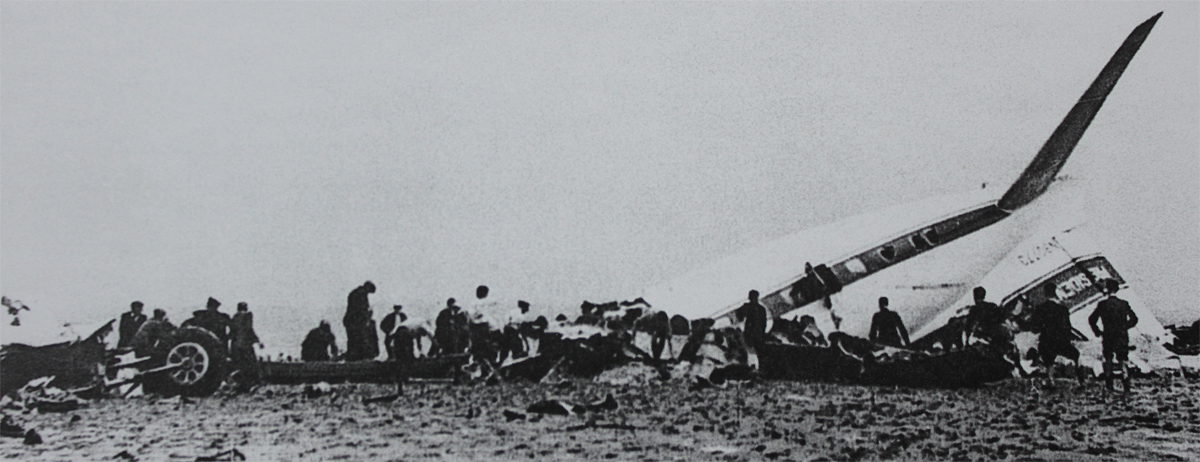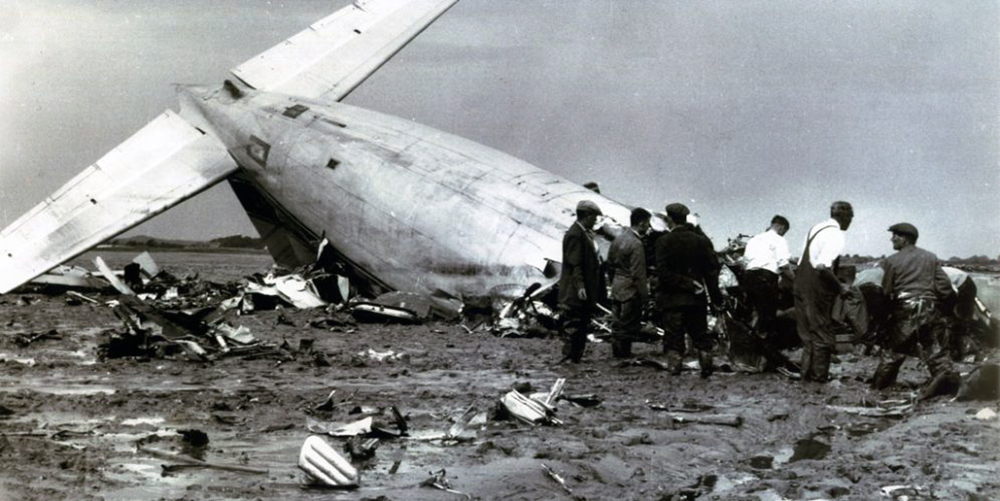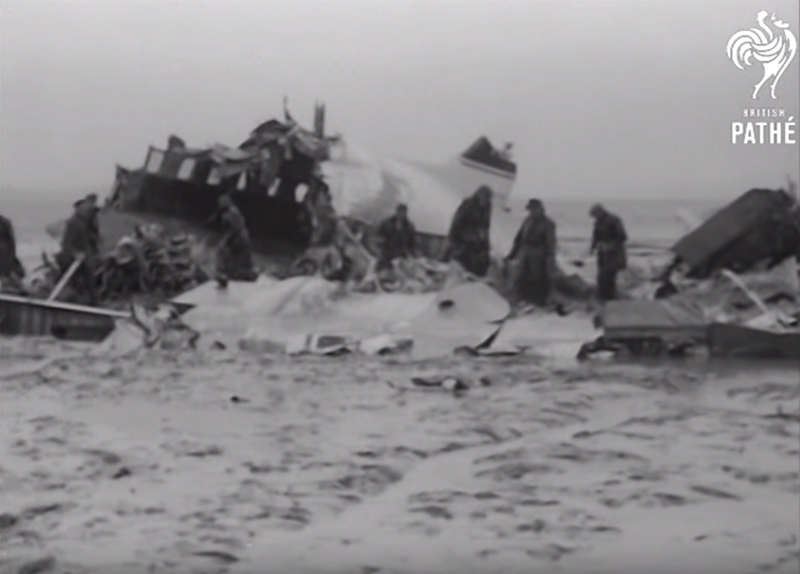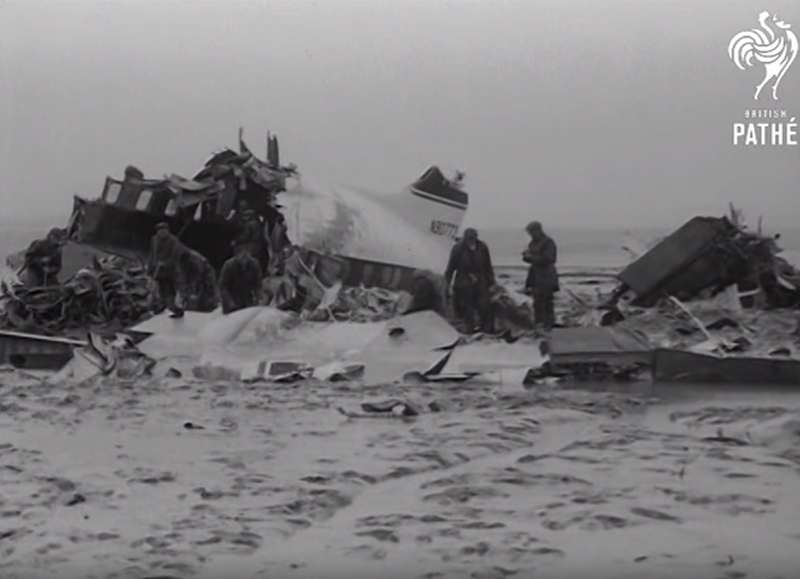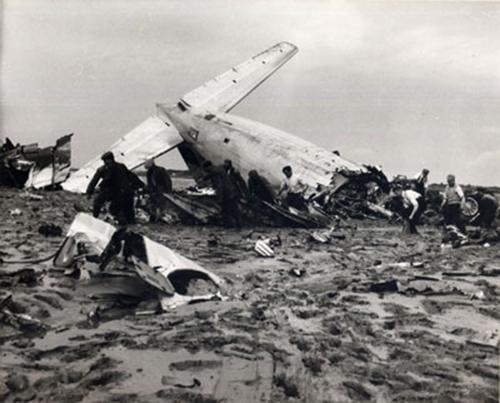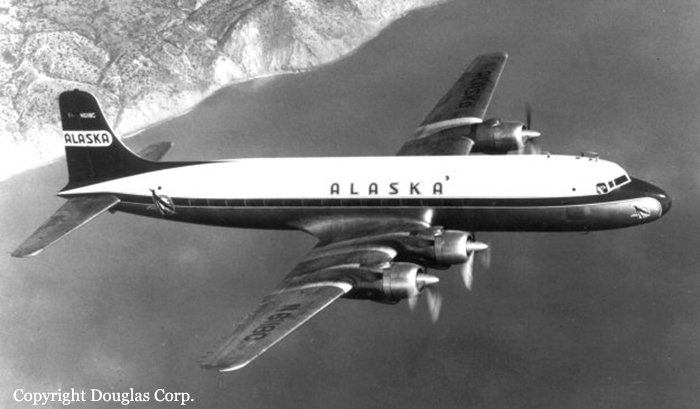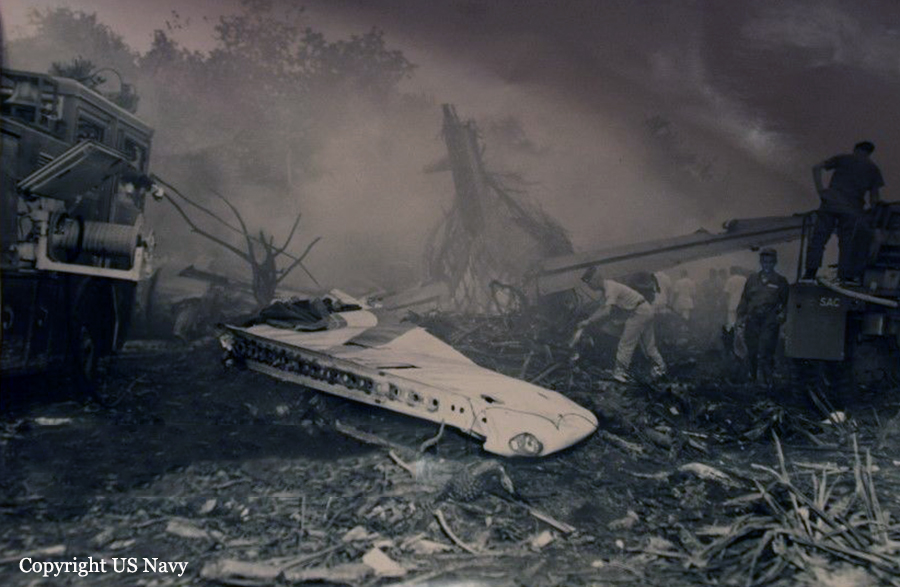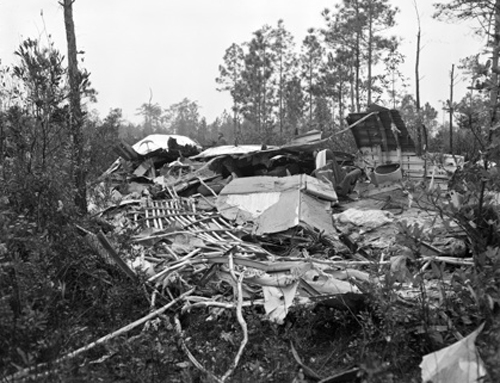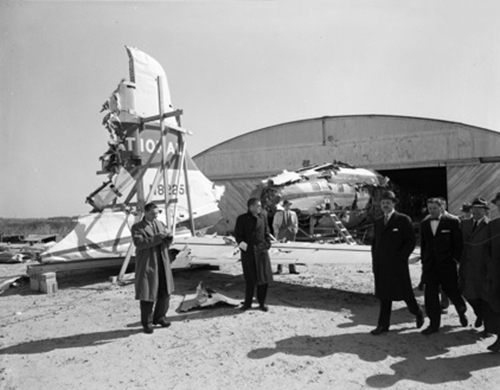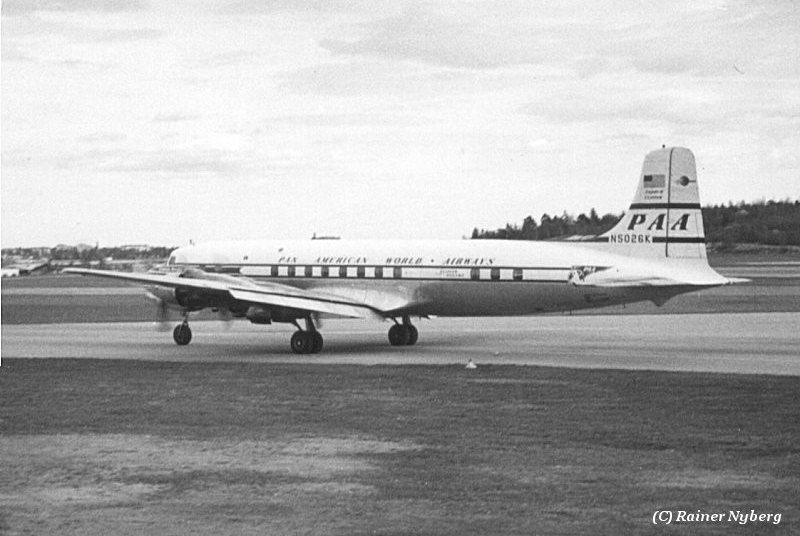Crash of a Douglas DC-6B in Shannon: 83 killed
Date & Time:
Sep 10, 1961 at 0355 LT
Registration:
N90773
Survivors:
No
Schedule:
Düsseldorf – Shannon – Gander – Chicago
MSN:
44058
YOM:
1953
Crew on board:
6
Crew fatalities:
Pax on board:
77
Pax fatalities:
Other fatalities:
Total fatalities:
83
Circumstances:
After takeoff by night from runway 24 at Shannon Airport, while climbing, the airplane turn to the left then banked left to an angle of 90° and eventually crashed inverted in the Shannon estuary, about two miles from the airfield. The aircraft was totally destroyed and all 83 occupants were killed. At the time of the accident, the visibility was poor due to the night and mist.
Probable cause:
Failure of the captain to maintain control of the aircraft after becoming airborne due to either:
- A defective artificial horizon and/or
- A fault in the right-hand aileron tabs.
Contributory causes could have been unsuitable weather conditions and possible crew fatigue.
- A defective artificial horizon and/or
- A fault in the right-hand aileron tabs.
Contributory causes could have been unsuitable weather conditions and possible crew fatigue.
Final Report:

